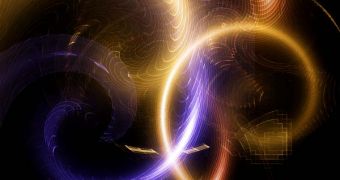So I've heard... But what does that even mean? It all goes back to German physicist Albert Einstein, who formulated the theories of Special and General Relativity in the early 1900s, in order to construct a better model that would explain the unique characteristics of space and time. Thus, relativity means that the laws of the universe are the same in each point of space-time and the same set of physical laws we experience on Earth are the same as those from the far borders of the universe.
This ultimately results in a different perception of the universe, in relation to different observers. Time flows slower for an observer traveling at relativistic speeds in comparison to the perspective of an observer that is not linked to the first's inertial frame, and vice versa, an observer traveling at speeds close to the speed of light would observe events outside his inertial frame as taking place at faster time rates.
The Theory of Special Relativity was the first of the two and was released in 1905, postulating that the speed of light is a constant and the maximum possible speed in the universe. This came as a shock in the physics scientific community, as intuition tells us that the speeds of objects add up, meaning that if a car were to travel at a given speed and another was coming towards the first from the opposing direction, the measured speed between the two cars would be the sum of the speeds of the two, and greater than if the two were to travel in the same direction.
This was unacceptable in Einstein's theory, the light speed is a constant equal to about 299,792 kilometers per second, regardless of the direction of travel. Then came the headlight paradox, asking what would be the outcome of a craft traveling at the speed of light when turning on the headlights. What happens is that the light would turn on normally, but only from the perspective of the observer in the respective inertial frame, or craft.
Another weird effect is experienced with lengths, meaning that the space may also appear different depending on the perspective of the observers. Relativistic contraction states that a ship traveling to speeds close to that of light would appear to a stationary observer shorter that it really is. Space and time have to be relative in order for the speed of light to remain constant.
The well-known twin paradox says that if a twin were to go in a long trip through the universe at relativistic speeds, then when he would return to Earth he would actually be younger that his brother who remained on the planet. Note: it was later demonstrated that the relativistic effects of time on the twin from the spaceship would cancel as he returns to the starting point, meaning that in fact the two twins would have aged at the same rate and there would be no visible difference between the two.
Furthermore, Einstein's theory of relativity postulates that nothing can travel at the speed of light, except light of course. As object approaches the speed of light, its mass would immediately tend to grow to infinity, thus it would require an infinite amount of energy to maintain its velocity. We all know that not even the universe has infinite energy. The effect is derived directly from Einstein's famous formula, E=mc^2, where E is energy, m is mass and c the speed of light. The same formula also suggests that E (energy) and m (mass or matter) are two different forms of existence of a single entity, thus energy can be converted into matter and vice versa.
In the Theory of General Relativity, Einstein postulates that acceleration is distorting the fabric of space-time, thus a human being launched into space with the help of a rocket would be unable to distinguish between Earth's gravitational acceleration and that of the rocket, accelerating towards space. Also, bodies with extreme masses curve the fabric of space-time and we experience this curvature in the form of gravitational force. Objects falling through the vicinity of a massive body would no longer maintain a straight-line trajectory.
General relativity also predicted Mercury's precession motion, the dragging of space-time around massive rotating bodies, redshift of light while escaping gravitational wells, gravitational waves and the existence of mysterious bodies that we call today black holes. The gravitational pull of black holes creates a warp in space-time so powerful that nothing escapes from falling towards the singularity.
Wormholes may be contained by such monsters, which could one day give us capabilities to travel in distant areas of the universe without breaking the speed of light limit, however the probability is rather slim. A body falling in a black hole would most likely be torn apart by the powerful gravitational fields long before reaching the singularity, through a process called spaghettification. From the perspective of an observer falling into a black hole, it would appear as the whole process takes only a few seconds; on the other hand, an outside observer would actually see it falling forever, throughout the life of the universe.

 14 DAY TRIAL //
14 DAY TRIAL //